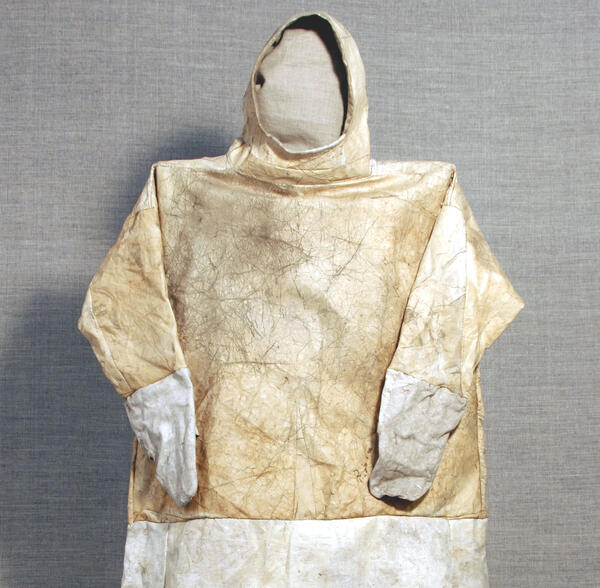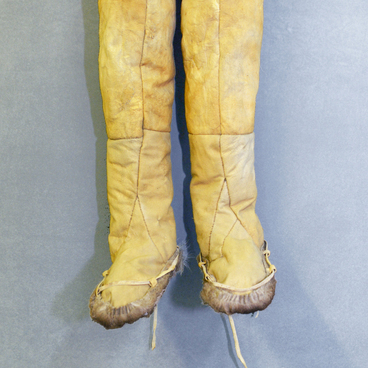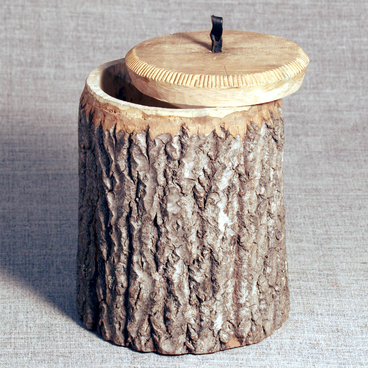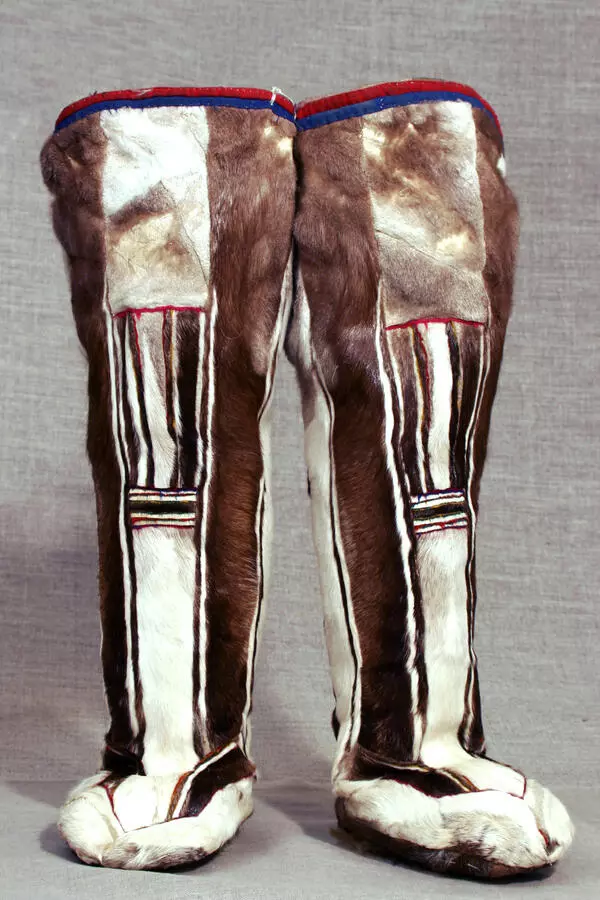The Forest NEnets traditional clothing is well adapted to the tough Northern climate conditions, activities and lifestyle of the Tundra inhabitants. It warms up its owner and protects from icy cold winds in winter, one can stay outside in the frost for a long time or go far by sledge. In summer this outfit protects from rain and mosquitoes.
In the recent past, the Forest NEnets used to wear clothing made of rOvduga, reindeer suede, in summer. To make rOvduga, a pelt it soaked in water for a few days, then fur is plucked out with hands. The remaining undercoat is removed with a special scraper. Before processing the other side of the pelt, it is well dried and rubbed with birch dust. It improves durability and softness of the pelt.
Summer rovduga clothing is sewn with special threads made of reindeer tendons. Female reindeer back tendons are considered to be the best by the Forest Nenets as they split well for fibers. The length of threads is usually 40–45 cm. They are no thicker than manufactured ones of small sizes but much stronger.
Well-dried tendons are carefully separated with fingers into fibers and rolled with palms against the cheek or the knee so that the threads become smooth. Before sewing, they are moisturized with water or saliva to increase their elasticity. After they get dry, the threads tighten the seam and it becomes stronger.
Male summer rovduga clothing in the museum exposition was provided by the Forest Nenets Zinaida Pyak, a Dyanki-Koy camp resident. The set consists of a long shirt of a simple design with a hood and attached mittens and trousers reaching the middle of the shin. The shirt was usually worn with the hood down leaving the head uncovered even when the weather was cold. The trousers were tied up with a rovduga string at the waist. Today clothes made of rovduga are almost out of use. Nowadays men mostly wear in summer old mAlitsas (upper coats) with fur almost rubbed down.
In the recent past, the Forest NEnets used to wear clothing made of rOvduga, reindeer suede, in summer. To make rOvduga, a pelt it soaked in water for a few days, then fur is plucked out with hands. The remaining undercoat is removed with a special scraper. Before processing the other side of the pelt, it is well dried and rubbed with birch dust. It improves durability and softness of the pelt.
Summer rovduga clothing is sewn with special threads made of reindeer tendons. Female reindeer back tendons are considered to be the best by the Forest Nenets as they split well for fibers. The length of threads is usually 40–45 cm. They are no thicker than manufactured ones of small sizes but much stronger.
Well-dried tendons are carefully separated with fingers into fibers and rolled with palms against the cheek or the knee so that the threads become smooth. Before sewing, they are moisturized with water or saliva to increase their elasticity. After they get dry, the threads tighten the seam and it becomes stronger.
Male summer rovduga clothing in the museum exposition was provided by the Forest Nenets Zinaida Pyak, a Dyanki-Koy camp resident. The set consists of a long shirt of a simple design with a hood and attached mittens and trousers reaching the middle of the shin. The shirt was usually worn with the hood down leaving the head uncovered even when the weather was cold. The trousers were tied up with a rovduga string at the waist. Today clothes made of rovduga are almost out of use. Nowadays men mostly wear in summer old mAlitsas (upper coats) with fur almost rubbed down.





